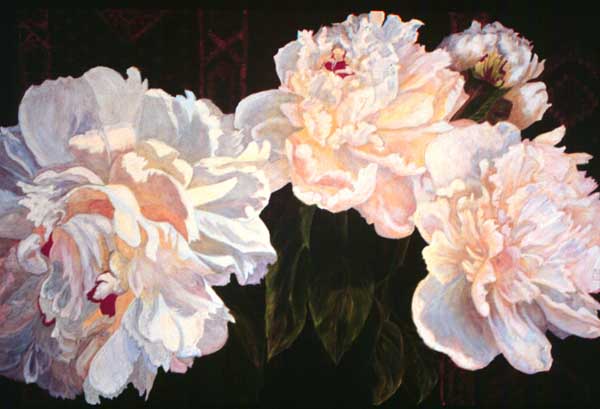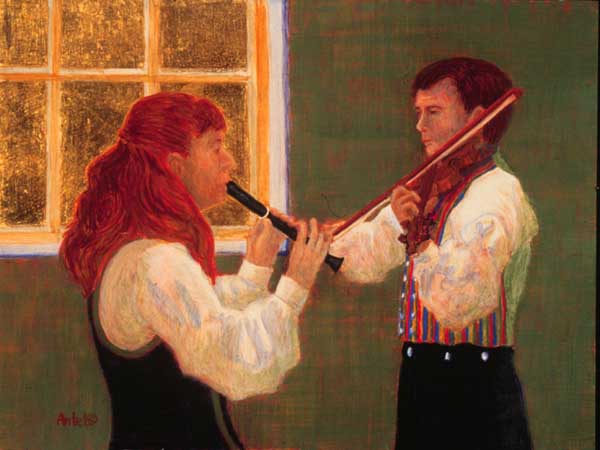 |
Rosemary Sylvanus Antel © Copyrights
Official web site
| Art
Data Base |
| Egg Tempera Paintings | |
 |
"Wheel of Life" 22k gold and egg tempera
on masonite 56cm (22") x 56cm (22") This work was created as a part of a series on the Black Death which was exhibited in the Nordic Heritage Museum in 1999. During the time of the plague, the wheel of life was a common image, reflecting the transience and cycles of life. It was during this time that the skeleton figure of death with a scythe, the "grim reaper", first appeared in art. |
 |
"White Peonies IX" egg tempera on masonite
81cm (32") x 122cm (48") I grow many peonies in my garden, but my favorite is the white or palest pink double peony. This one was an ancient plant growing in the garden when I moved here, so I do not know the name. |
 |
"White Peonies II" egg tempera on masonite
80cm (31.5") x 122cm (48") This peony is the variety Festiva Maxima. I especially love the streaks of red that appear in the center of the blossom. Their heavy blossoms scent a whole room. |
 |
"Norwegian Musicians" 22k gold and egg
tempera on masonite 23cm(9") x 30cm(12") Traditional Norwegian music played by musicians in their native costume set a mood that is like going home to me. I love to paint these costumes because of the large white linen shirt sleeves that remind me of the peony blossom, the way they catch and reflect the light. |



